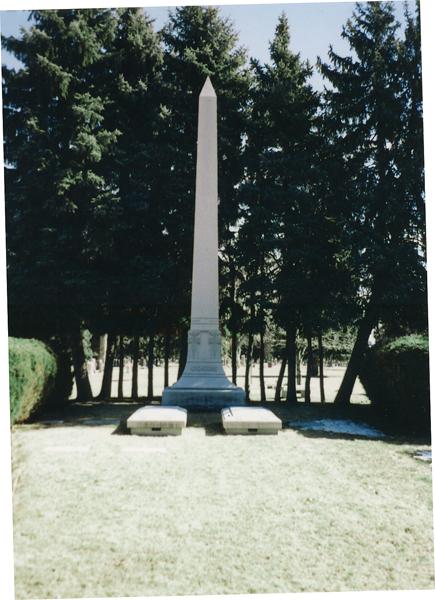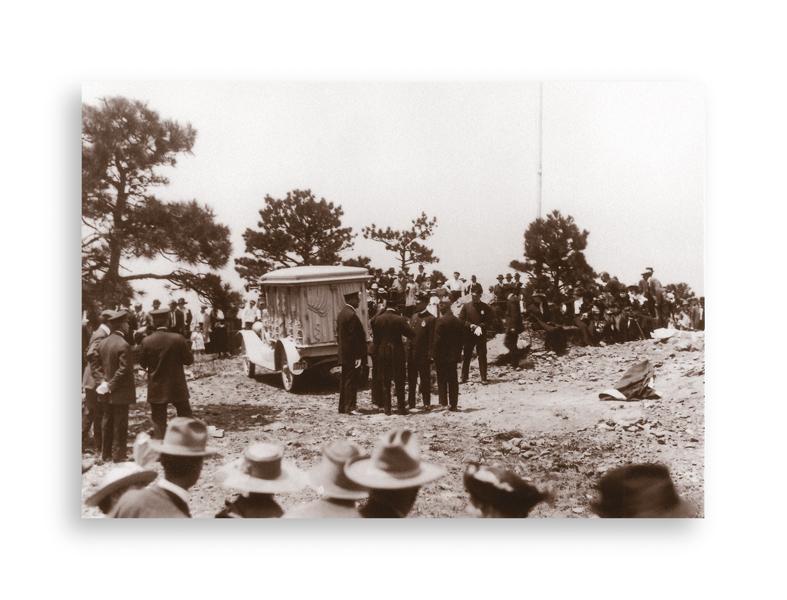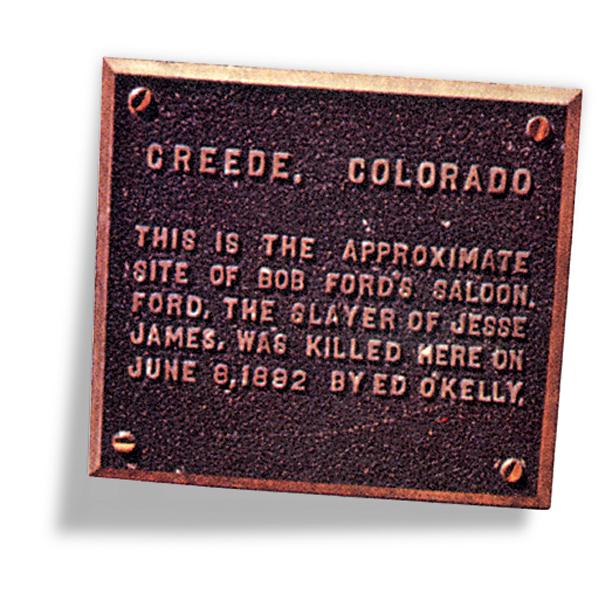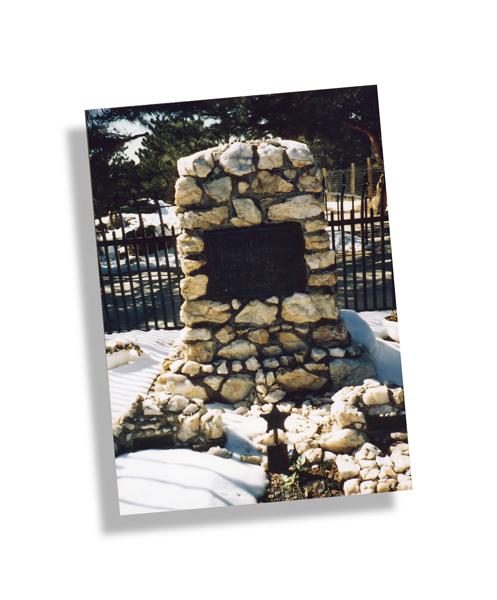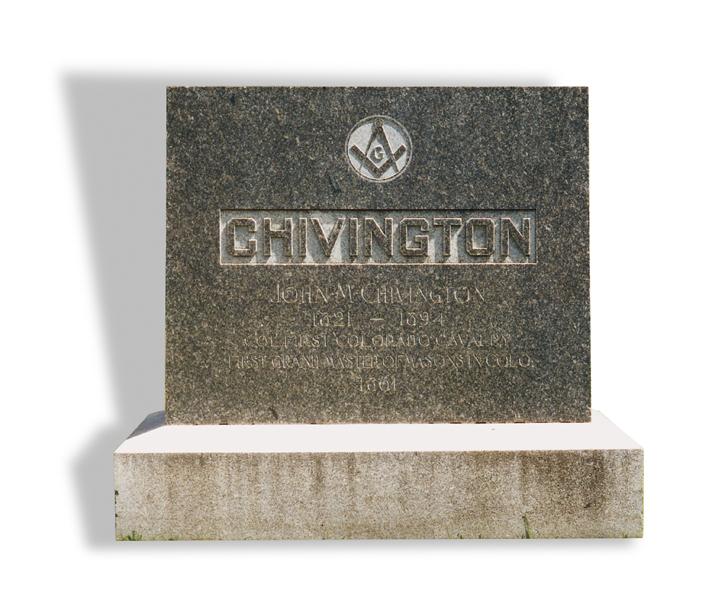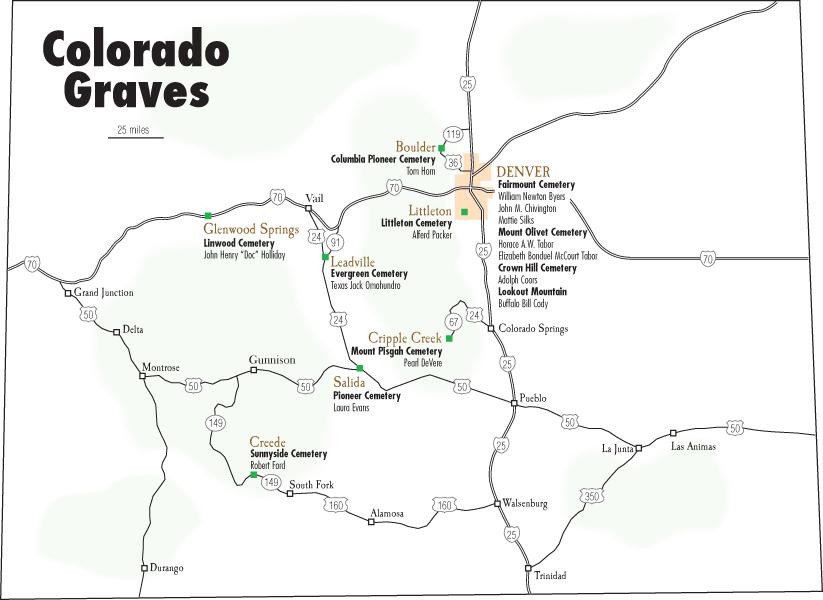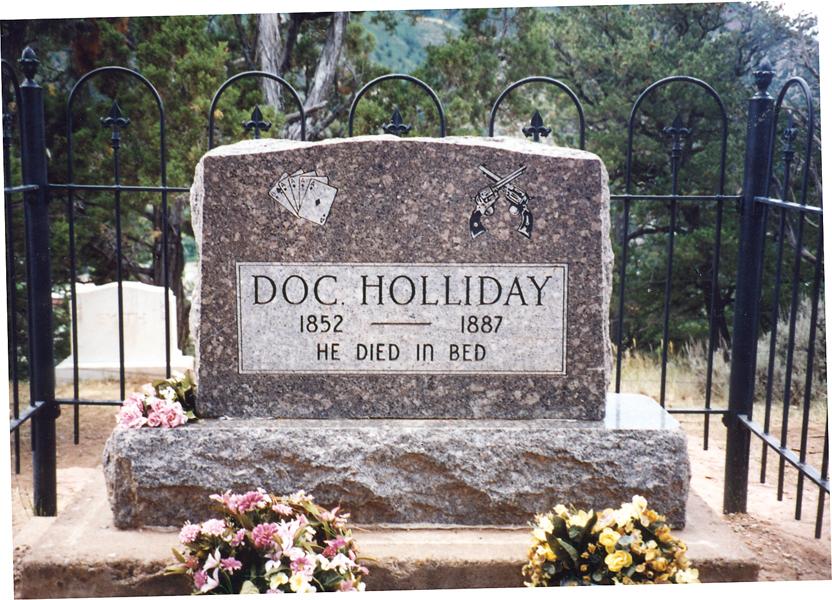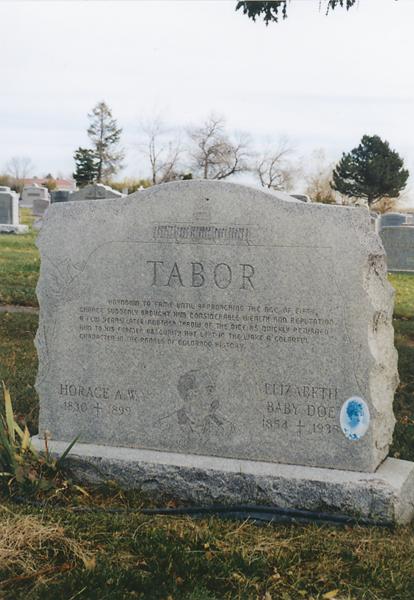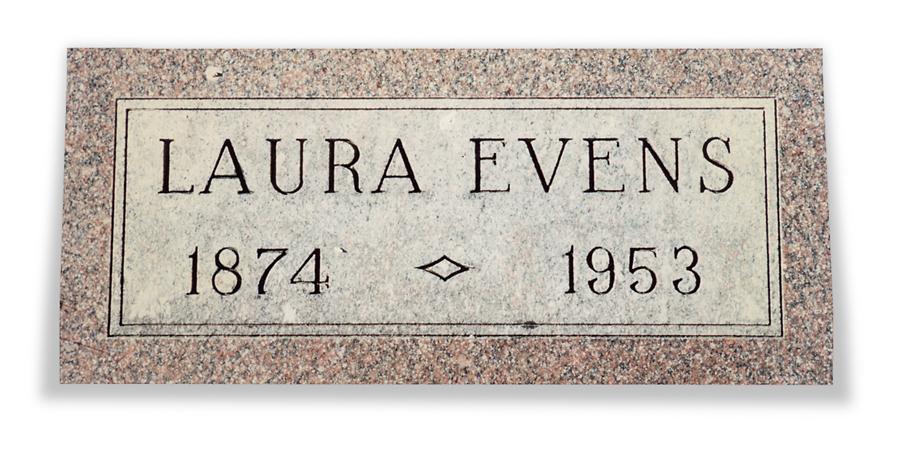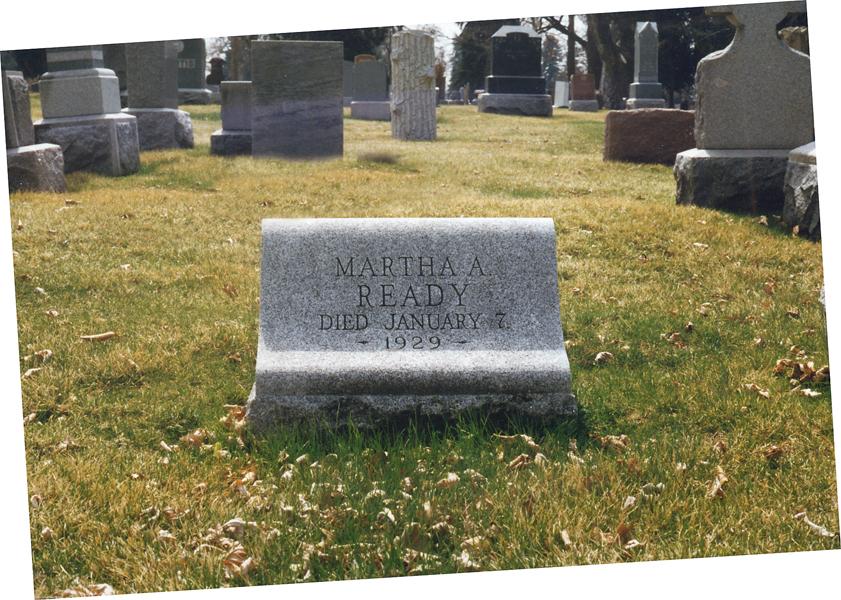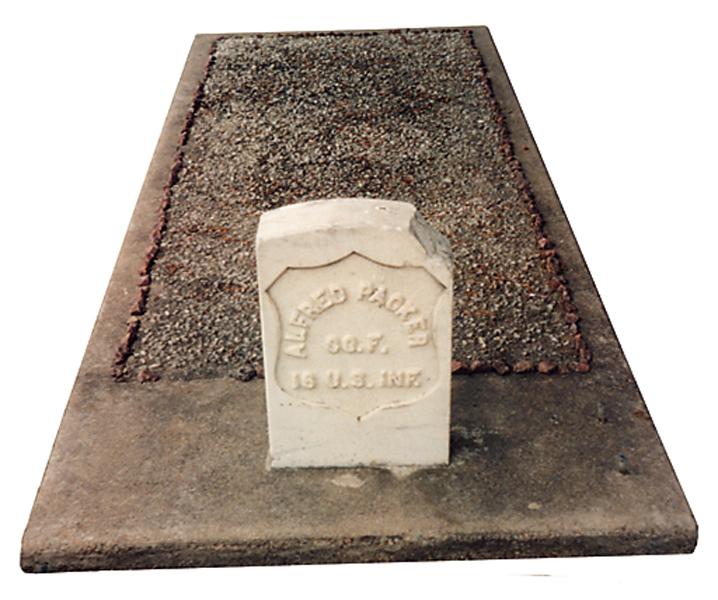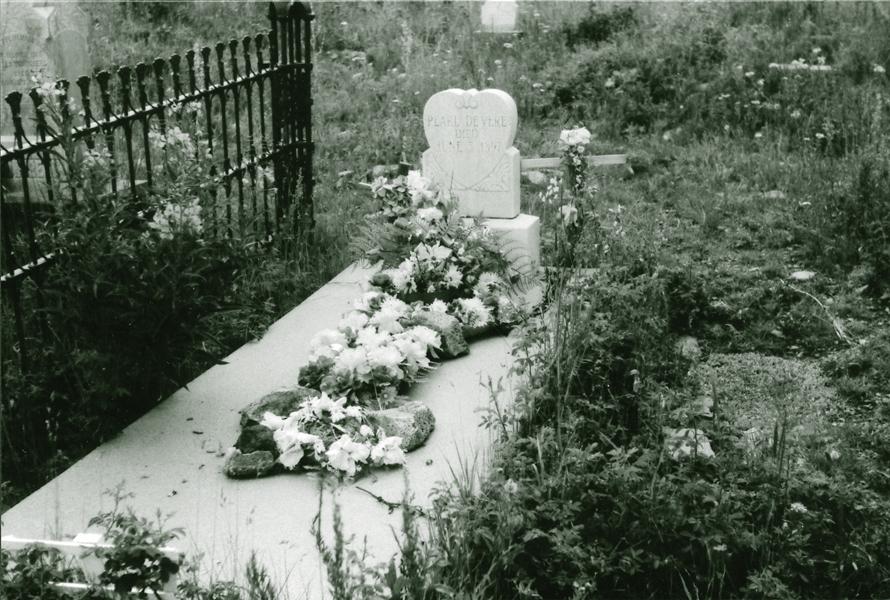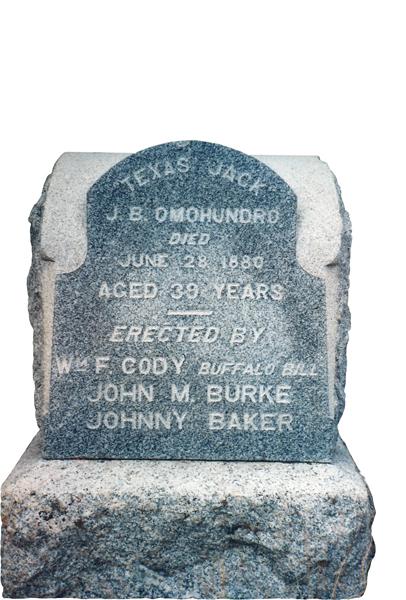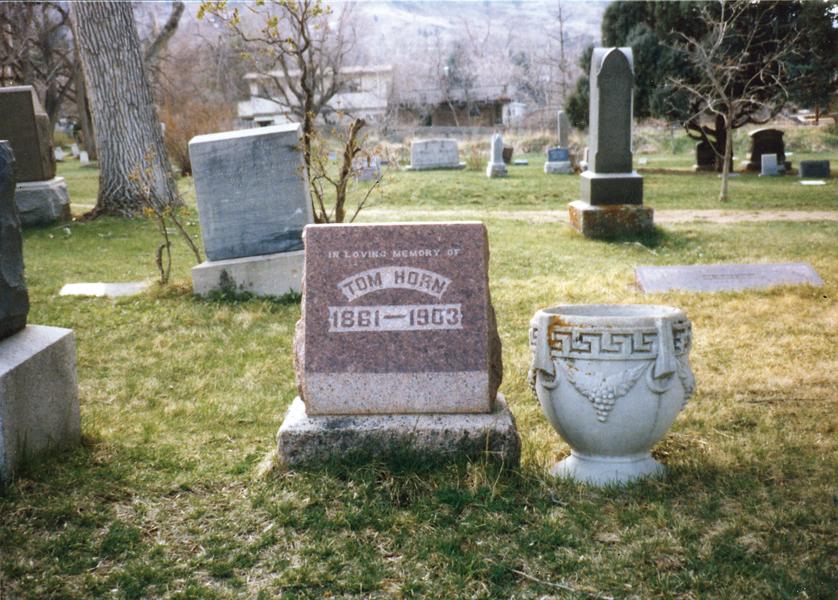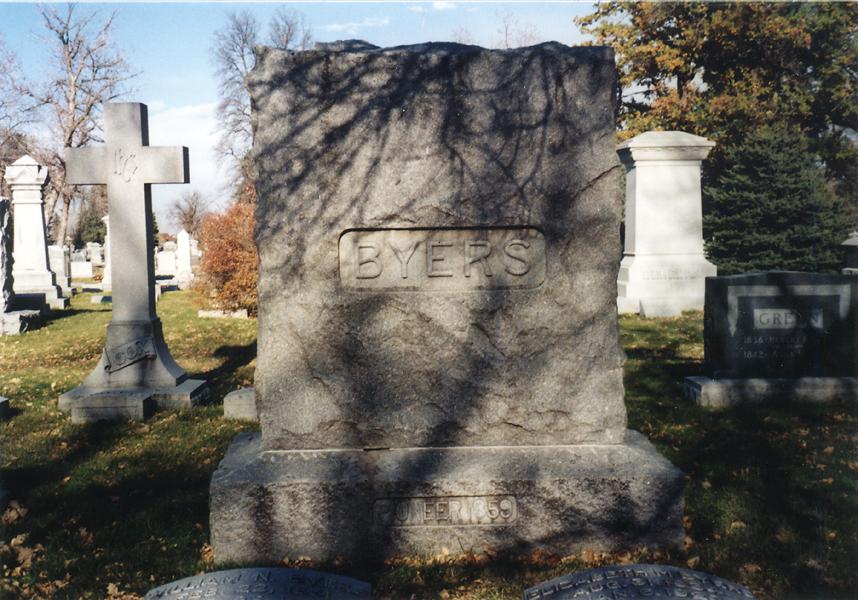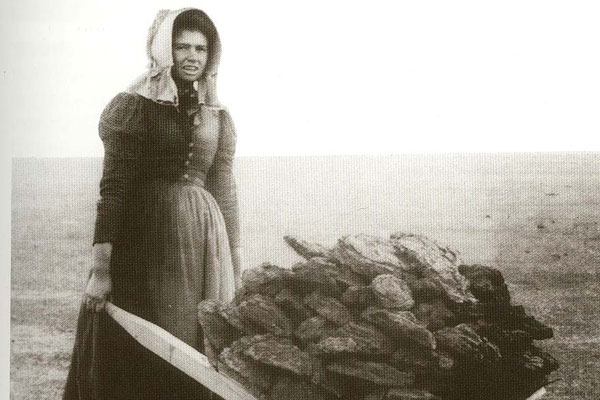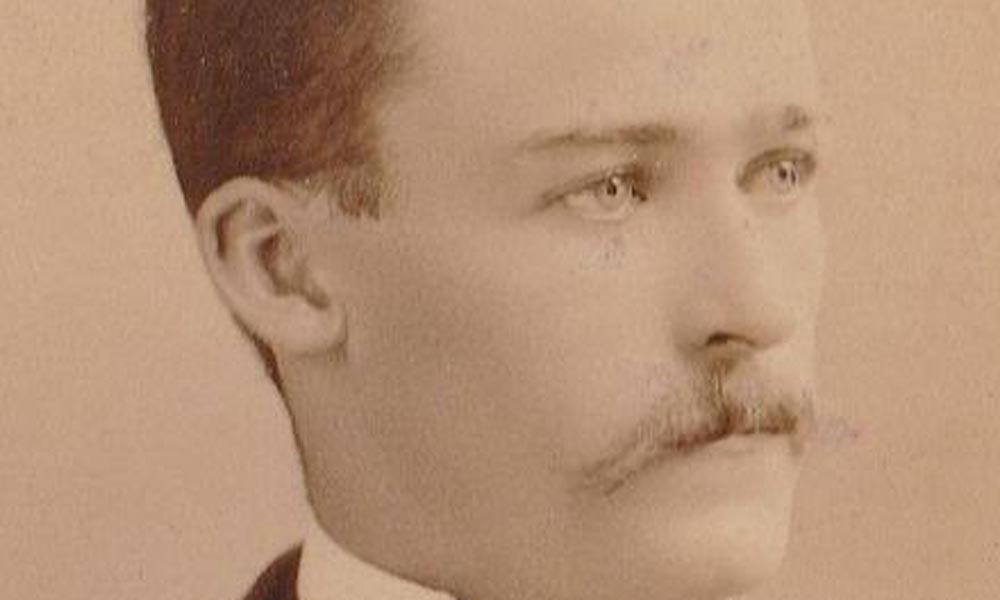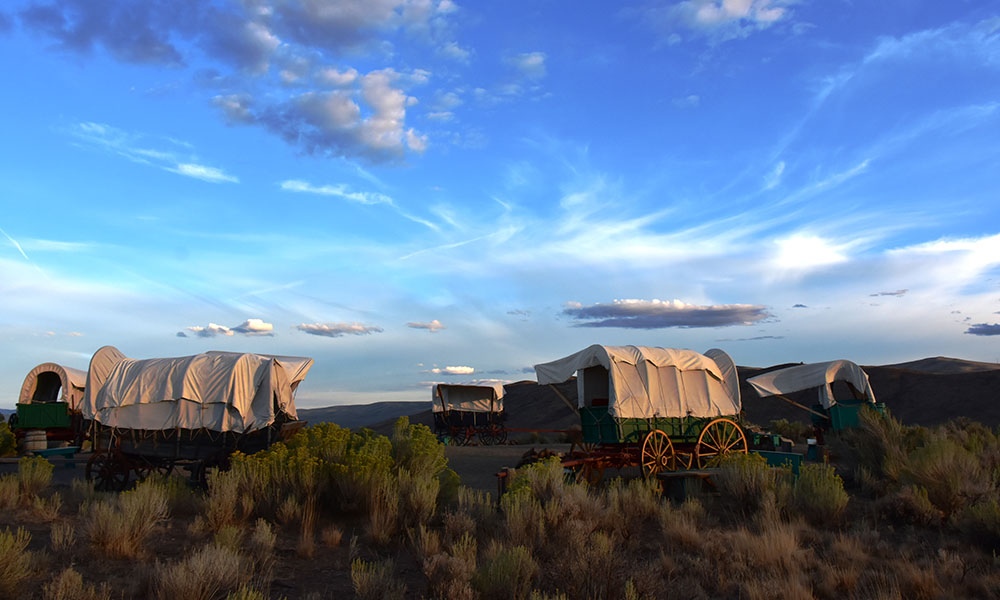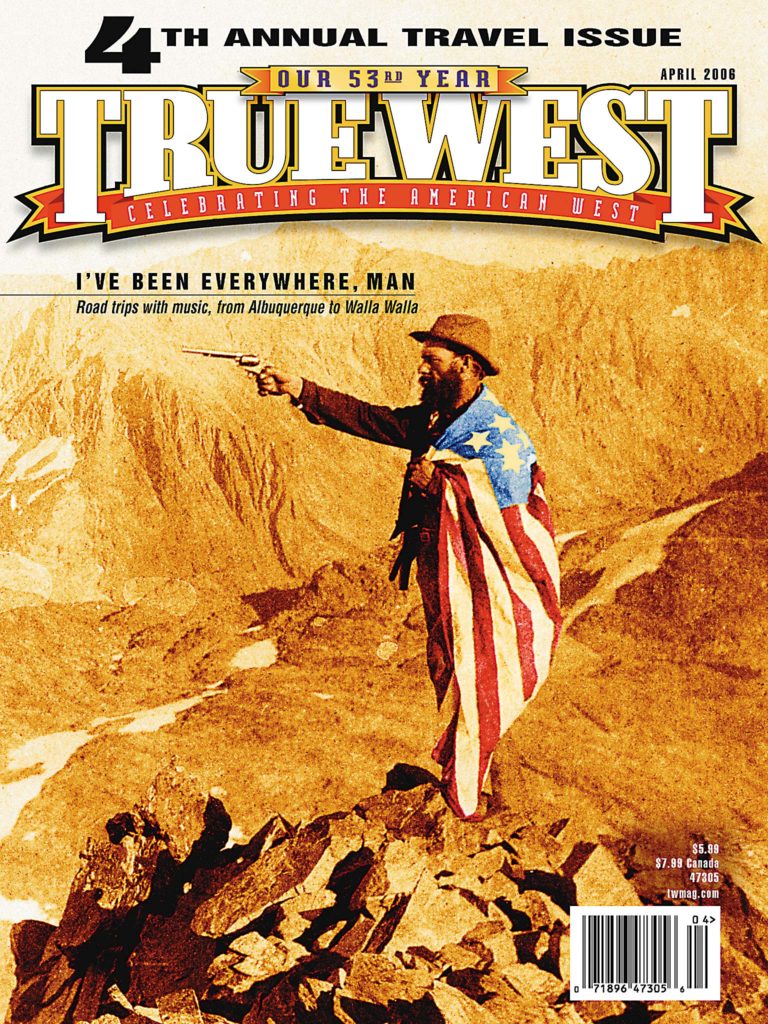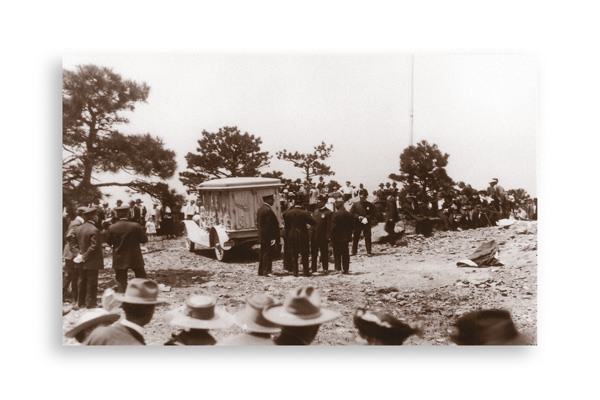 A bustling sensation of the Westward Movement rumbled from the Plains to the very Rocky Mountains that held a man’s dream. The original gold strike at the base of this majestic mountain range not only yielded uncountable wealth to many, it would save the nation from an economic disaster, leading the Colorado Territory to become the 38th state in the Union, in 1876. Colorado’s development began with the pioneers who laid the foundation for this great state. Today their monuments and gravestones mark the silent cemeteries across the state. This is a tribute to their memory; Their story, from the grave.
A bustling sensation of the Westward Movement rumbled from the Plains to the very Rocky Mountains that held a man’s dream. The original gold strike at the base of this majestic mountain range not only yielded uncountable wealth to many, it would save the nation from an economic disaster, leading the Colorado Territory to become the 38th state in the Union, in 1876. Colorado’s development began with the pioneers who laid the foundation for this great state. Today their monuments and gravestones mark the silent cemeteries across the state. This is a tribute to their memory; Their story, from the grave.
WILLIAM NEWTON BYERS
Born: 1831 in Ohio. Died: 1903 in Denver, Colorado. Buried: Fairmount Cemetery in Denver. Contribution: On April 23, 1859, a few days after his arrival to the confluence of Cherry Creek and the South Platte River, Byers published the region’s first newspaper, which he called The Rocky Mountain News. He also played an active role in Colorado achieving statehood and helped organize the city’s chamber of commerce. Cause of Death: Natural Cause. Tribute: “Not a single page of Denver history could be written without Byers being mentioned,” wrote Jerome Smiley, author of 1901’s The History of Denver.
HORACE A.W. TABOR
Born: November 26, 1830, in Holland, Vermont. Died: April 10, 1899, in Denver, Colorado. Buried: Mount Olivet Cemetery in Denver (moved from Calvary section of Old City Cemetery in Denver). Contribution: Put Colorado on the economic map, in silver and scandal. After prospecting for 18 years in Colorado gold camps, Horace finally found fortune in Leadville. Turning to politics, he became the city’s mayor, improving Leadville with an opera house, the first bank, a fire hose company and a telephone company, before he moved to Denver. After “divorcing” his wife Augusta in 1880, Horace secretly married a divorceé, Elizabeth “Baby Doe” McCourt in 1882. Augusta contested the divorce, and the marriage wasn’t legally recognized until March 1, 1883. The repeal of the Sherman Silver Purchase Act of 1893 caused the value of silver to plunge, and so, too, most of the Tabor fortune. Tabor died penniless. Cause of Death: Appendicitis. Last Words: “Hang on to the Matchless Mine,” which legend reports Horace said to his beloved Baby Doe.
ELIZABETH BONDUEL McCOURT TABOR
Born: October 7, 1854, in Oshkosh, Wisconsin. Died: March 7, 1935, in Leadville, Colorado. Buried: Mount Olivet Cemetery in Denver, Colorado. Contribution: This divorceé became famous after marrying Silver King Horace Tabor. After his death, she spent 35 years trying to make the Matchless Mine come back to life so she could fulfill her husband’s dying wish; she died trying. Cause of Death: Found frozen in the shape of a cross, to her cabin’s shanty floor.
TEXAS JACK OMOHUNDRO
Born: July 26, 1846, near Palmyra, Virginia. Died: June 28, 1880, in Leadville, Colorado. Buried: Evergreen Cemetery in Leadville. Contribution: Although he definitely fit the adage, a jack of many trades, John Baker “Texas Jack” Omohundro is most known for being a showman. He began his acting career while appearing with Buffalo Bill Cody in “Scouts of the Prairie.” Cause of Death: Pneumonia. Tribute: Given by Buffalo Bill Cody, who personally placed the headstone still standing today, “Texas Jack was an old friend of mine…. I learned to know him and respect his bravery and ability … he was a whole souled, brave, and good hearted man.”
ADOLPH COORS
Born: February 4, 1847, in Barmen, Rhenish Prussia. Died: June 5, 1929, in Virginia Beach, Virginia. Buried: Next to his wife, in the family plot, of Denver’s Crown Hill Cemetery. Contribution: Originator of the Coors Brewery, based in Golden, Colorado, after Adolph purchased land east of Golden, on the edge of Clear Creek’s cool spring water, pure and perfect for brewing beer. When prohibition came, though, Adolph began the Denver Pottery Company, which is why his tribute references this, in place of his being a brewer. Cause of Death: Suicide. Tribute: “Adolph Herman Joseph Coors, aged 82, retired pottery manufacturer of Golden Colorado was killed instantly yesterday by a fall from a window of a Virginia Beach hotel [The Cavalier], where he was stopping.”—The Virginia Pilot, June 6, 1929
BUFFALO BILL CODY
Born: February 26, 1846, near LeClaire, Iowa. Died: January 10, 1917, in Denver, Colorado. Buried: On top of Lookout Mountain in Denver. Contribution: William F. “Buffalo Bill” Cody is credited with bringing down over 4,000 head of buffalo while working for the Kansas Pacific Railroad. He then became an army scout, leading many skirmishes against Indians, for which dime novels stereotyped him as a Wild West hero. With such a fan base, he went on to begin his own Wild West show in 1883, starring himself, of course. Cause of Death: Kidney failure. Tribute: “The State of California desires to express its appreciation of the courage and fearlessness of this, our last frontiersman, whose life stands forth in the establishment and foundation of our western country; and Whereas, in his death that romantic and stirring chapter in our national history that began with Daniel Boone is forever closed.”—Resolution in memoriam from the State Legislature of California on January 18, 1917. Last Words: After asking his doctor how much time he had left (not much), Cody said “Then let’s forget about it, and play high five.”
ROBERT FORD
Born: 1861 in Missouri. Died: June 8, 1892, in Creede, Colorado. Buried: Original burial site is at the north end of Sunnyside Cemetery in Creede. The body was later removed to Missouri at his wife’s request. Contribution: Popularly known as the “Dirty little coward who shot Mr. Howard,” referring to the outlaw Jesse James, whom Robert killed on April 3, 1882. Cause of Death: Gunshot wound, given by Ed O. Kelly.
ALFERD PACKER
Born: January 21, 1842, in Allegheny County, Pennsylvania. Died: April 23, 1907, in Littleton, Colorado. Buried: Littleton Cemetery (his grave is covered with three feet of concrete to protect against vandals and is marked by a government stone, denoting Packer’s U.S. Infantry days; gravestone states Alfred Packer, another spelling of his name). Contribution: If you can call it that, but Packer is famous as the only man in U.S. history to be convicted of cannibalism. As a scout for gold prospectors in the Rocky Mountains, Packer was the lone survivor of a party of five men he had led into the San Juan Mountains during 1873-74. When he returned and the remains of his companions were found above Lake City, with body parts missing, Packer was eventually sentenced to 40 years in prison in 1886. He was released in 1901. Cause of Death: Natural Cause. Last Words: “I’m not guilty of the charge,” according to Littleton’s newspaper, Independent.
JOHN HENRY “DOC” HOLLIDAY
Born: August 14, 1851, in Griffin, Georgia. Died: November 8, 1887, in Glenwood Springs, Colorado. Buried: Linwood Cemetery in Glenwood Springs (gravestone at left incorrectly notes birth year as 1852; it has since been corrected). Contribution: Most noted for his participation in the Gunfight Behind the O.K. Corral where he shot and killed Tom McLaury with a shotgun; the dentist and gambler was also a part of Wyatt Earp’s Vendetta Ride. Cause of Death: Tuberculosis. Tribute: “One of the most fearless men on the frontier, and whose devotion to his friends in the climax of the fiercest ordeal was inextinguishable. It was this, more than any other faculty that secured for him the reverence of a large circle who were prepared on the shortest notice to rally to his relief.”—Carbonate Chronicle, November 14, 1887. Last Words: “This is funny,” supposedly said after seeing his naked feet (he didn’t “die with his boots on”).
TOM HORN
Born: November 21, 1860, near Memphis, Missouri. Died: November 20, 1903, in Cheyenne, Wyoming. Buried: Columbia Pioneer Cemetery in Boulder, Colorado. Contribution: While fighting for the U.S. Army, Horn was present at Geronimo’s surrender as a Spanish translator. By 1890, he joined the Pinkerton National Detective Agency. His story became one
of corruption when he hired on as a horse breaker for the Swan Land and Cattle Company in Wyoming in 1894. His real duty was doling out “justice” for cattle barons as a hired killer. Horn’s end came after he mistook a 14-year-old William Nickell for his father and fatally shot the boy in the back. A drunk Horn admitted as much to U.S. Deputy Marshal Joe LeFors. (Many experts doubt that Horn shot the kid.) Cause of Death: Hanging. Last Words: Said from the gallows, “Hurry it up. I got nothing more to say.” —According to Legend
JOHN M. CHIVINGTON
Born: January 27, 1821, near Lebanon, Ohio. Died: October 4, 1894, in Denver, Colorado. Buried: Fairmount Cemetery in Denver. Contribution: Best known for leading the Third Colorado Volunteer regiment on a bloody, murderous attack against a camp of Cheyenne and Arapahos, known as the Sand Creek Massacre. For his part, Chivington was condemned by a Congressional committee. This Methodist preacher did win praise for his leadership during the earlier skirmish at La Glorieta Pass, Colorado’s only Civil War battle. Cause of Death: Cancer. Tribute: When Chivington died in 1894, his body was buried with full Masonic honors, and his grand funeral procession included members of the Grand Army of the Republic as well as the Colorado Pioneer Society.
MATTIE SILKS
Born: 1846 in Kansas. Died: January 7, 1929, in Denver, Colorado. Buried: Fairmount Cemetery in Denver. Contribution: Martha A. Ready, a.k.a. Mattie Silks, was considered the “Queen of the Row” of Denver’s tenderloin district. She’s most known for participating in the first female duel in Denver’s history. She challenged to a duel Kate Fulton, a competitive madam who had become too friendly with Mattie’s man, Corteze Thomson. Both fired and missed, but ironically, Mattie’s bullet nicked her beloved Corteze. Cause of Death: From complications suffered during a fall.
LAURA EVANS
Born: 1874. Died: 1953. Buried: Pioneer Cemetery in Salida, Colorado (her granite marker is misspelled as Evens). Contribution: One of Colorado’s oldest operating madams, Laura left Denver for Leadville in 1894, at the height of Jack the Ripper’s murder spree on Denver’s Market Street. She’s famous for hiding a $27,000 payroll beneath her skirts and riding horseback to deliver it to mine owners during Leadville’s mining strike. Cause of Death: Natural Cause.
PEARL DeVERE
Born: 1861, based on an obituary stating she died at 36. Died: June 5, 1897, in Cripple Creek, Colorado. Buried: Mount Pisgah Cemetery in Cripple Creek. Contribution: The most prosperous of all madams in the Red Light District, Pearl built the grandest brick parlor house in the city, which is the Old Homestead Museum today. Cause of Death: Overdose of morphine. Coroner’s Report: “The coroner ruled that an accidental overdose of morphine, to induce sleep, had caused the death of Pearl DeVere. She had given a lavish party the previous evening. Upon retiring, she was restless and took a dose of the morphine to sleep. Still dressed in her exquisite Paris-made pink chiffon ball gown, complete with sequins and pearls, Pearl eventually fell to sleep.” —Cripple Creek Gold Rush, June 10, 1897


